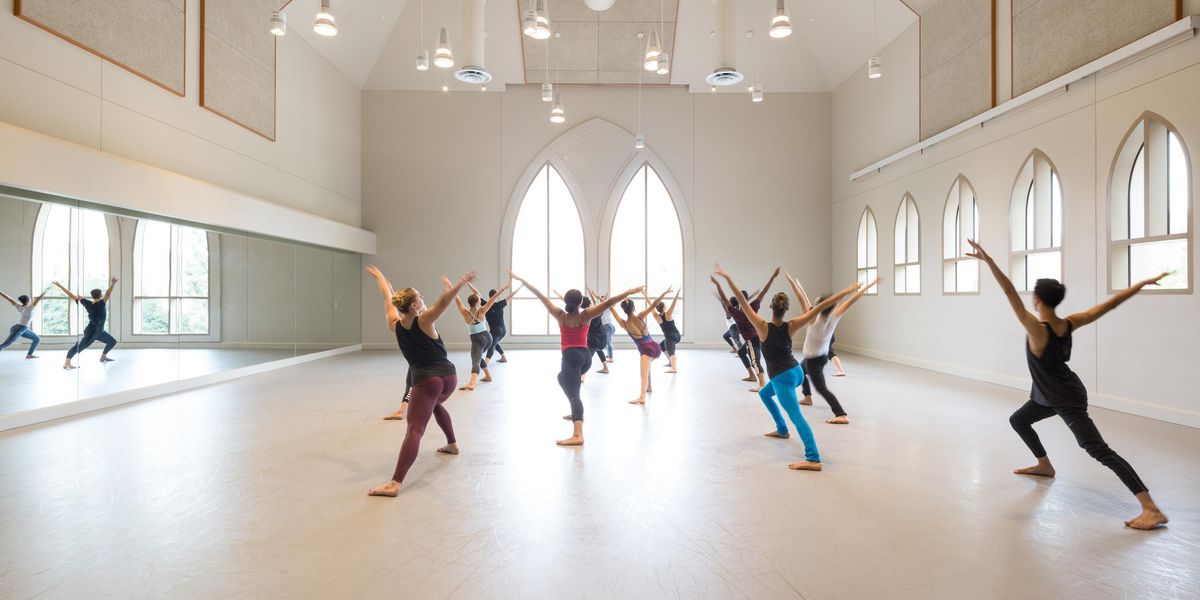A Trans-Atlantic Breeze Is Blowing in Ballet
When I went to Jacob’s Pillow a couple weekends ago, I saw two small, adventurous companies: Daniil Simkin’s Intensio and Gauthier Dance//Dance Company Theaterhaus Stuttgart. They are led by two young men who crossed the Atlantic—in opposite directions—to create their careers. Daniil Simkin came from Germany and Vienna to join American Ballet Theatre in 2008, and Eric Gauthier left Montreal to join the Stuttgart Ballet in 1996. Both are charismatic dancers, though Gauthier didn’t perform with his company at the Pillow. And while Daniil still dances with ABT, Eric has left Stuttgart Ballet to direct his company full time.
Both of these young directors are tapping into a vein of contemporary European choreography. I can see why. It just happens that most of today’s creators in contemporary ballet are from Europe. In looking for a reason, I would say it’s possibly because Europe has a longer tradition of mixing ballet and modern dance. Think of Glen Tetley, Jirí Kylián, Roland Petit and Mats Ek. They all combine the groundedness of modern dance with the line of ballet, the deep work in the spine with musicality.
Intensio’s Céline Cassone and Daniil Simkin in Islands of Memories by Annabelle Lopez Ochoa. Photo by Morah Geist.
Finnish dancemaker Jorma Elo, who is resident choreographer at Boston Ballet, is a great example of the cross-pollination between Europe and the U.S. He could be called a disciple of Kylián and Ek, yet his works have given a shot of adrenaline to many American companies. His trio for Intensio, titled Nocturne/Etude/Prelude, is both classical and playful. Departing from his usual manic pace, Elo gives the dancers time to absorb the movement and understand their relationships. He explored the trio possibilities beautifully, using nifty surprises sparingly. Dancing with Simkin and James Whiteside, Isabella Boylston’s dancing flowed like a liquid framed by two solids.
Simkin and the Stage by Alexander Ekman. Photo by Christopher Duggan.
Later in his program, Simkin teamed up with the brilliant Swedish renegade Alexander Ekman—again. The title, Simkin and the Stage (Part Two of Simkin and the City from YouTube), sent me to the internet to see what the two had cooked up last year. For a funny slant on how ballet strikes the uninitiated, check out their first collaboration, “Simkin and the City.” But the new piece stands on its own, particularly the parts where Simkin (on tape) talks about growing up dancing with his father and being trained by his mother. We see projections of Daniil’s tender boyhood face, full of determination, with a simultaneous video loop of him spinning in endless à la seconde turns.
Maurus Gauthier in Eric Gauthier’s Ballet 101. Photo by Christopher Duggan.
I also appreciated the humor in Gauthier Dance’s program. Every one of the seven short pieces had a quick wit and playfulness. Works by Johan Inger (Sweden), Po-Cheng Tsai (Taiwan), and Cayetano Soto (Spain) played with gender roles in bold ways. But my favorite was Eric Gauthier’s madcap solo Ballet 101. Like Ekman’s piece for Simkin, it deconstructs the ballet vocabulary to delightful effect. The eager soloist, performed by the wonderfully elastic Maurus Gauthier (no relation), stretches, jumps, kneels and twists, all to a voice on tape demanding that he perform certain numbered positions. He runs himself ragged trying to comply. We feel for him yet are thrilled by positions that get closer and closer to the impossible. Maurus Gauthier’s willingness and goofy exasperation win us over.
Concert dance can sometimes get bogged down in the seriousness of proving that it’s art. But during the third week in July, a new lightness broke through this solemnity. Kudos to Jacob’s Pillow for bringing in these obstreperous go-getters.




